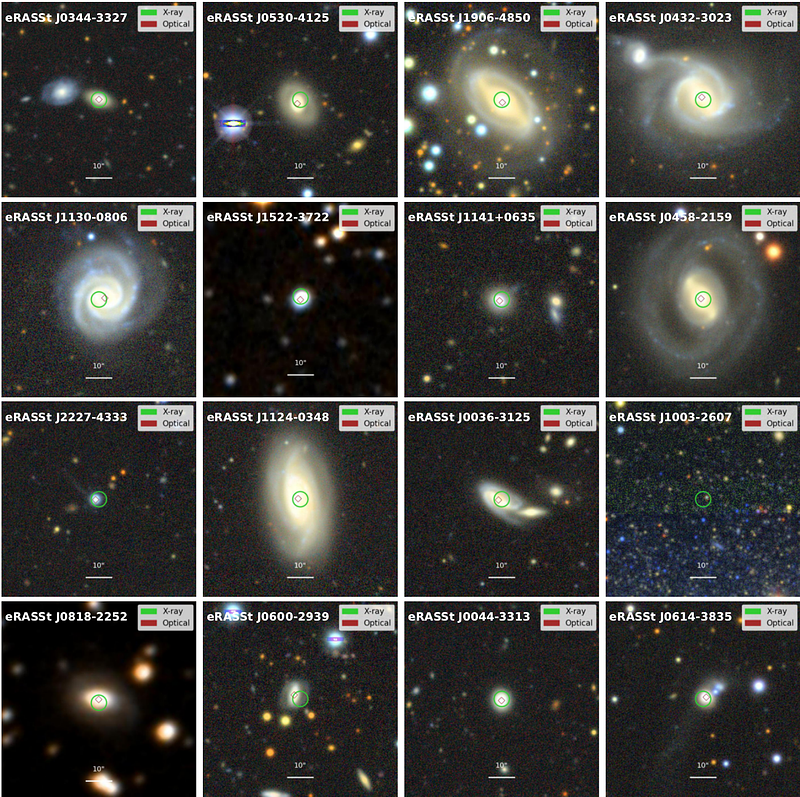Searching for supermassive black holes binaries within SRG/eROSITA-De I: Properties of the X-ray selected candidates

Searching for supermassive black holes binaries within SRG/eROSITA-De I: Properties of the X-ray selected candidates
D. Tubín-Arenas, M. Krumpe, D. Homan, A. Markowitz, M. Powell, G. Lamer, T. Urrutia, A. Schwope, H. Winkler, S. Bahic, J. Buchner, C. Andonie, M. Salvato, A. Merloni, J. Kurpas, S. Ciroi, F. di Mille, A. Chaturvedi, A. Rau, Z. Igo, I. Grotova, Z. Liu, K. Nandra
AbstractAbridged: Supermassive black hole binaries (SMBHBs) separated by (sub)-pc scales represent one of the latest stages of hierarchical galaxy assembly. However, many of these objects are hidden behind large columns of gas and dust at the center of galaxies and are difficult to detect. The X-ray and UV emission in these systems are predicted to vary regularly on timescales comparable to that of the orbital period of the binary. This is the first of a series of papers where we aim to find SMBHB candidates based on quasi-periodic light curves from the soft X-ray instrument eROSITA on board the Spectrum-Roentgen-Gamma (SRG) observatory and X-ray follow-up. We searched the multi-epoch SRG/eROSITA all-sky surveys for extragalactic sources that show an `up-down-up-down' or `down-up-down-up' profile (from scan to scan) in their 0.2--2.3 keV flux light curves. We compiled a sample of 16 sources that are suitable for X-ray follow-up campaigns given their brightness and significant variability between bright and faint SRG/eROSITA flux levels. We triggered extensive Swift-XRT and NICER monitoring campaigns on the best SMBHB candidates to confirm or discard their tentative periodicities. Optical spectroscopic observations confirmed the nuclear and extragalactic nature of 15/16 objects and enabled single-epoch SMBH mass measurements and BPT classifications. Our most promising candidate, eRASSt J0530-4125, shows X-ray quasi-periodic variability with a typical time scale of one year in the observed frame. By stacking the X-ray observations of each source in our sample, we find that 14/15 sources can be modeled by a power law with a photon index ranging from $\Gamma\sim1.8-2.8$. Based on our selection, we estimate an optimistic upper limit on the fraction of SMBHB candidates to be $\sim 0.05$ per galaxy. We emphasize that further observational evidence is needed to confirm the SMBHB nature of our sources.